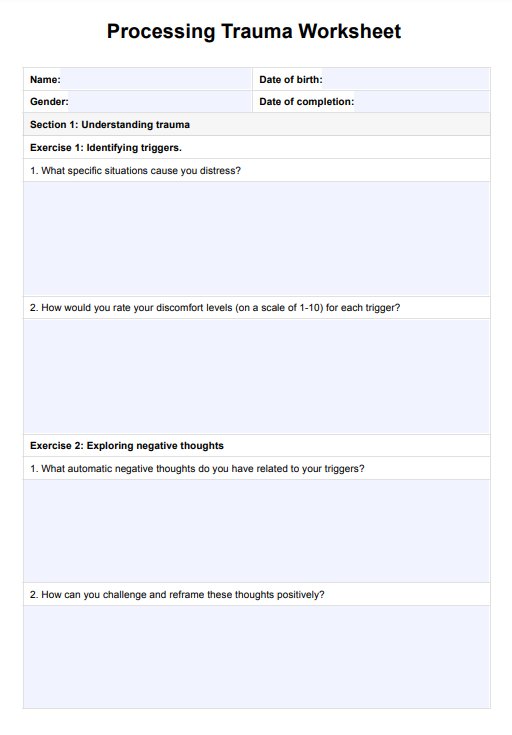The Processing Trauma Worksheet is a structured resource designed to assist individuals in addressing and understanding the impact of traumatic experiences. By promoting trauma processing through evidence-based techniques like cognitive restructuring and relaxation strategies, it helps manage trauma-related emotions and fosters recovery.

Processing Trauma Worksheet
Download a free Processing Trauma Worksheet to help clients identify triggers, challenge negative thoughts, and build coping skills for recovery.
Processing Trauma Worksheet Template
Commonly asked questions
The worksheet provides a step-by-step framework for identifying triggers, challenging negative thought patterns, and developing effective coping strategies. It empowers individuals to confront traumatic memories, reframe distorted beliefs, and regulate emotional responses, supporting the overall healing process.
Yes, the worksheet is versatile and adaptable to various types of traumatic events, including childhood trauma, domestic violence, and other distressing experiences. Its comprehensive approach ensures it can address a wide range of trauma symptoms and support recovery for diverse individuals.
EHR and practice management software
Get started for free
*No credit card required
Free
$0/usd
Unlimited clients
Telehealth
1GB of storage
Client portal text
Automated billing and online payments











